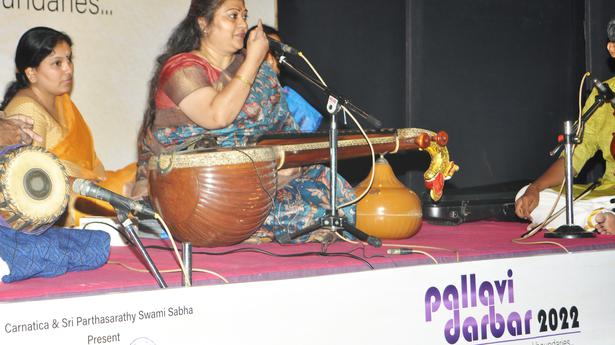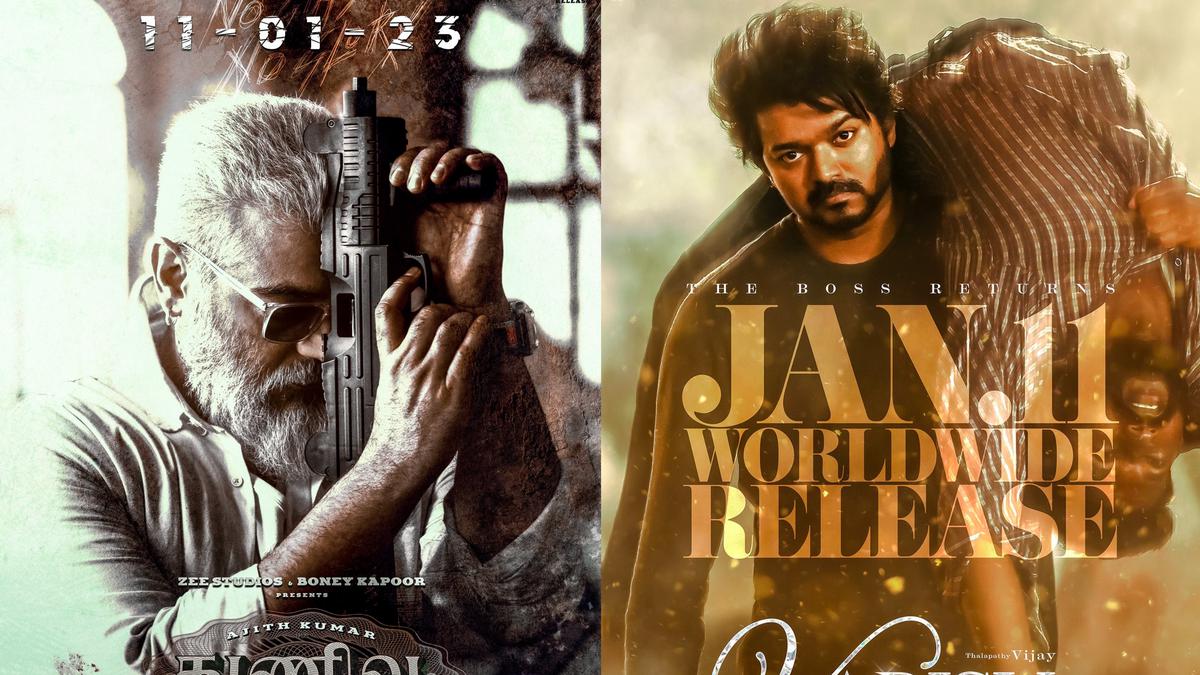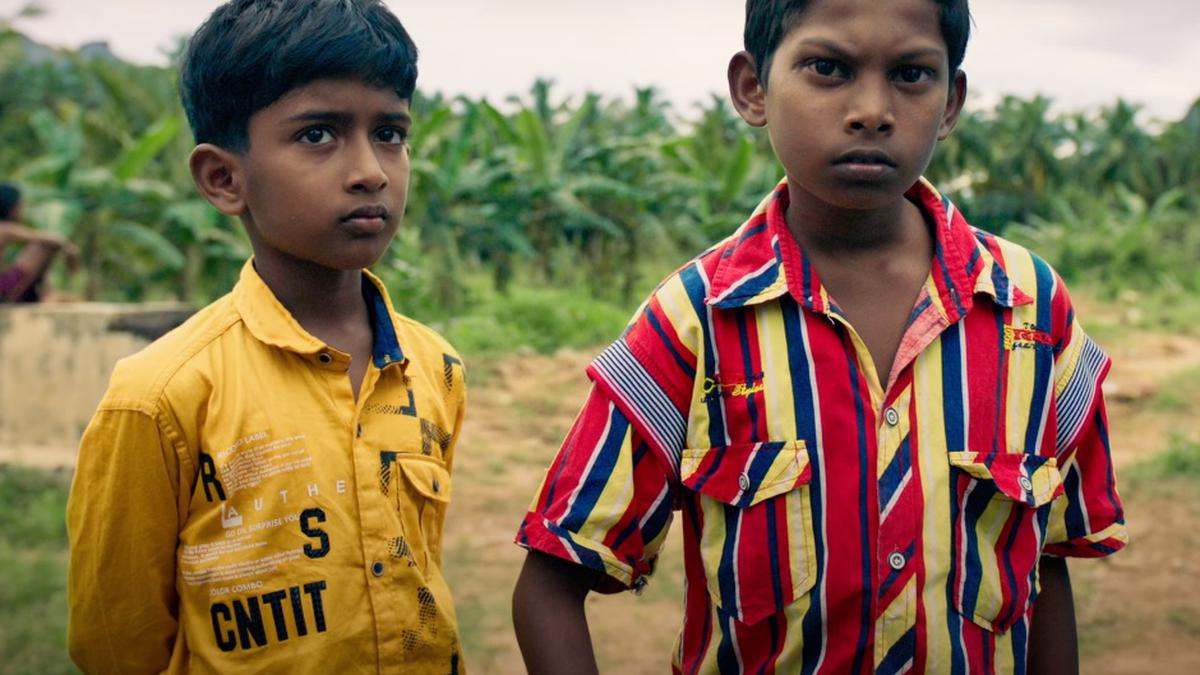The senior musician shared insights into the different types of tanam, how to develop and present it to enhance the overall beauty of a kriti
This year’s Pallavi Darbar, a festival that celebrates Ragam-Tanam-Pallavi, honoured scholar and musicologist T.S. Satyavathi with the ‘Tana Gana Praveena’ award, and it was only apt that senior vocalist S. Sowmya presented a lec-dem on the ‘Art of Tanam Presentation’ on that day.
Along with L. Ramakrishnan on the violin and Neyveli Narayanan on the mridangam, Sowmya explored the semi-rhythmic style, which she thought to be the most evolved component of manodharma sangeetham, the spontaneous improvisation through creativity.
Sowmya noted that it might be difficult to sing tanam that does not sound like a raga alapana and that doing so calls for the singer to give the ragam and tanam a lot of attention. Starting with the raga’s brief phrases and expanding upon them would allow the form of tanam get into a rhythm that will aid in a strong presentation, she continued. Further, she suggested that the vocalist may start from that point when the violinist comes up with a new pattern.
Emphasis on raga bhava
Sowmya stressed that the raga bhava is crucial in every situation, while pointing out that closing phrases with akaram creates a pleasant feeling. She made a point while singing a phrase in Varali and explained that it can be difficult to create patterns in ragas with vakra sancharas or prayogas when there is no opportunity to sing the swaras in a particular order.
Sowmya with L. Ramakrishnan and Neyveli Narayanan.
| Photo Credit: Special Arrangement
Noting that kalapramanam or tempo is vital to tanam singing, she said that some ragas lend themselves to any tempo, but a very slow tempo could result in singing some prayogas that might rob the identity of the ragas. By singing a couple of phrases in Anandabhairvi, Saveri and Purvi Kalyani, Sowmya demonstrated how to develop tanam and end it properly manifesting the raga.
The senior musician recommended a balanced approach during tanam singing. She explained that it should neither be too verbose with ‘nam’ and ‘tha’, nor with too many alapana phrases. Comparing the Carnatic style of tanam with the taan singing in Hindustani music, she said that the appropriate use of vocal chords would give a correct punch.
Not just the varisai exercises, but practising tana varnams, ghana raga, and the secondary set of ghana raga phrases in tanam form helps in developing the phrases and maintaining the tempo. Practising Tyagaraja’s Pancharatna kritis in tanam form and trying to bring in creative variations would largely add to the exercise.
Tanam on violin and veena
Sowmya then invited violinist L. Ramakrishnan to share his thoughts on playing tanam on the instrument. He demonstrated two types of ‘tana vil’ — one without changing the direction of the bow, and another like a staccato in a single bow. He displayed the skill of bowing on two strings simultaneously with ‘ri’ and ‘pa’ respectively on two strings, in raga Shanmukhapriya.
Somwya emphasised that one should not shy away from singing plain notes, especially in ragas with sadharana gandharam like Thodi and Shanmukhapriya, as the plain notes in some ragas add beauty to tanam.
She moved on to present the ‘veenai sangathis’ in tanam by playing a few phrases on the veena by gently moving the fingers across the consecutive notes (theichu vasikkaradhu), and by splitting fingers between the notes. She also demonstrated how strumming the tala strings on the veena and the meettu takes care of the harder and softer (vallinam and mellinam) sounds.
Sowmya identified singing tanams with mridangam as a practice that used to be followed only at the Navaratri Mandapam concerts in Thiruvananthapuram. Now widely practised in many concerts, it gives a totally different dimension to tanam singing.
To a question as to what the laya vidwans look for in a tanam, Neyveli Narayanan responded that the ideal approach to accompany during a tanam is to go with the singer, be it a sarvalaghu or patterns in two or four aksharas that form a chain and gives a pleasing effect. He asserted that the brighas have to be left to the singers, and mridangam should refrain from interfering during those phrases. Sowmya concurred that there is a lot of give and take between the performers on stage, and sometimes the vocalist just listens to the percussionist’s interpretation.
Different varieties
Speaking about the varieties of tanam, Sowmya explained chakra tanam (patterns that go in circles), gaja tanam (tempo similar to the gait of an elephant), ashwa tanam (patterns resembling the gallop of a horse), manduka tanam (leaping notes in phrases, like daattu prayogas).
To sum up, Sowmya remembered her guru S. Ramanathan as saying that the audiences should enjoy listening to tanam, but the singer should sing it with a vigour of fire. She also recalled the doyen Semmangudi Srinivasa Iyer performing tanam in the sedate raga Nilambari with just the right punches.
The writer specialises in Carnatic music.





